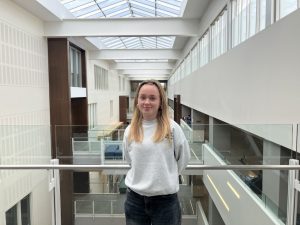Immediate counseling available through Text-A-Tip
New texting hotline provides access to professional help at any hour
April 15, 2016
On March 14, New Trier joined the Text-A-Tip program, a 24/7 hot-line that students can text anonymously if in a situation that requires immediate attention.
Text-A-Tip was started in January 2014 by the LEAD organization, or Leading Efforts Against Drugs.
The foundation works primarily in the Lake Bluff area. The creation of the program was triggered by the suicides of three Lake Forest students over the span of a few months in 2012.
Since its inception, it has grown to cover a total of 3.85 million community members. LEAD estimates that it will reach 10 million by the end of 2016.
According to Tim Hayes, assistant superintendent of student services, “Text-A-Tip is a resource where students can find immediate help for themselves or friends who are struggling with drug or alcohol abuse, depression, difficult family situations, bullying, or any of the many challenges teens face today.”
Although this service is very new to the township, the idea is not.
“New Trier has its own hotline,” pointed out Social Work department chair Tiffany Myers, “but for after-school hours and weekends, there [wasn’t] a resource.” She said this might be especially necessary if a situation arose at 2 AM when nothing else was open.
This resource is also available to the rest of the community. All residents, from middle-schoolers to adults, are welcome to use the hotline if they have any problems or serious concerns.
There’s no solid criteria for what qualifies as acceptable to text about. Some of Myers’s examples of subjects that may or may not require this immediate hotline were a fight with a friend or even an unusually upsetting test grade.
Though these texts will be considered and addressed, Hayes said, “it is primarily intended for community members to use when they need immediate mental health assistance or have a drug/alcohol abuse concern for themselves or a friend.”
The responders on the other line are qualified to answer almost any question. According to the New Trier website, “Texts are responded to by professional counselors at Child, Adolescent & Family Recovery Center (CAFRC), and 93% of the time that response is delivered within 1-3 minutes.”
The school paid $18,000 to set up the hotline and will pay an annual fee of $11,000 for the service to be available 24/7.
Despite the money and efforts that went into this plan, Myers admitted that its existence probably isn’t known by everyone that might use it.
“A few newspapers have written about it, but it’s getting to be known more by word of mouth,” she said.
Junior Yesol An hadn’t heard of Text-A-Tip before, but she saw the value in having the service available.
“I’d probably use it,” she said, “it’s anonymous, and you don’t have to go meet someone. Especially if you’re in a situation where you can’t drive, and you don’t want your parents to know.”
Loyola’s Counseling Department Chairman Bill San Hamel also sees this benefit. “I’ve seen more kids coming to adults directly, but they have comfort and familiarity using social media. They see (texting) as a way to anonymously share concerns for themselves or friends,” he told the Chicago Tribune.
Other students were a little more reluctant. “I don’t know when I would be in a situation [where I’d have to use it],” Jansen said, “but I have friends who might.”
The leaders of the organization realize that the hotline will not be used by everyone. “Not all students will need to use Text-A-Tip, but they will all be informed about the number to text in case a situation ever arises in which they feel they need clinical support,” said the New Trier website.
LEAD, the organization that created the program, has been running since 1986. It hosts events to help address issues surrounding teenagers, such as marijuana use and drinking.
It’s hosting a post-prom event at Six Flags Great America for Lake Forest High School students.
From its informational events to Text-A-Tip, LEAD’s purpose is “to significantly reduce drinking, drug use, and other risky behavior by youth while working simultaneously to eliminate the root causes of these issues in the future.”











































